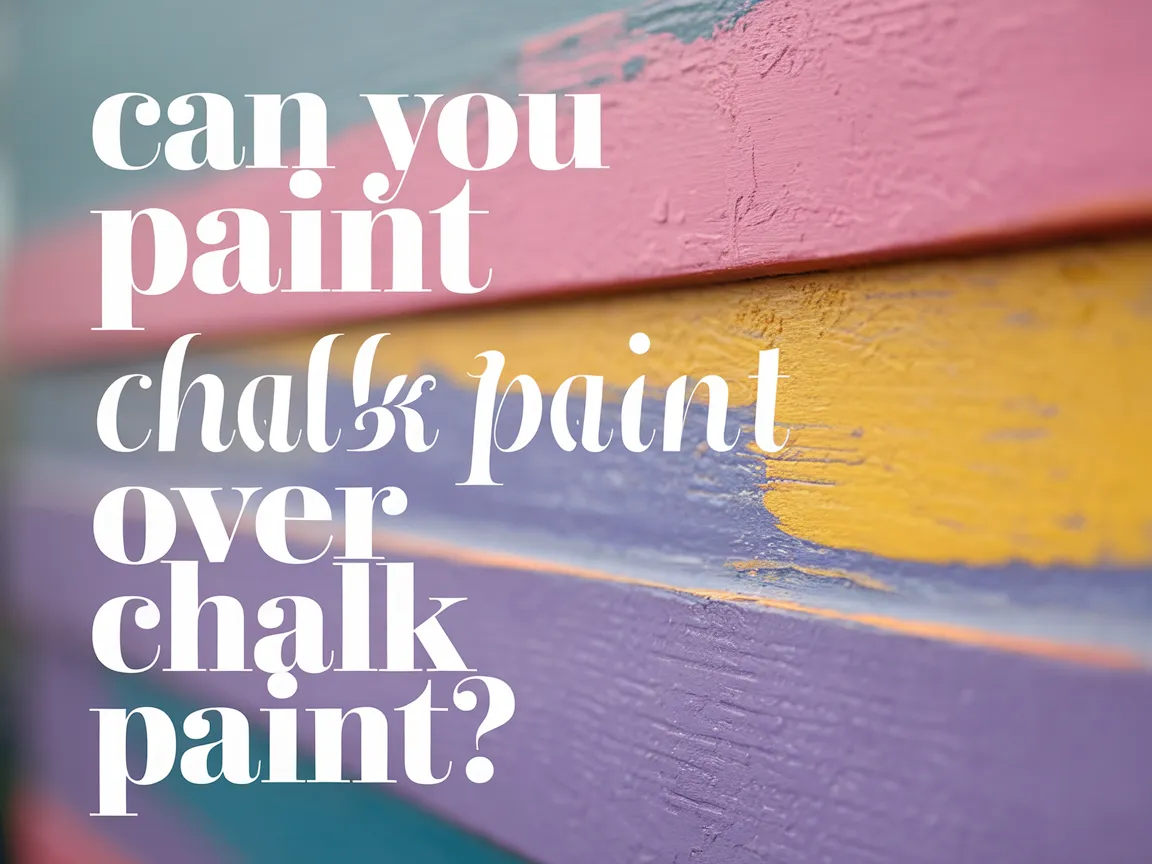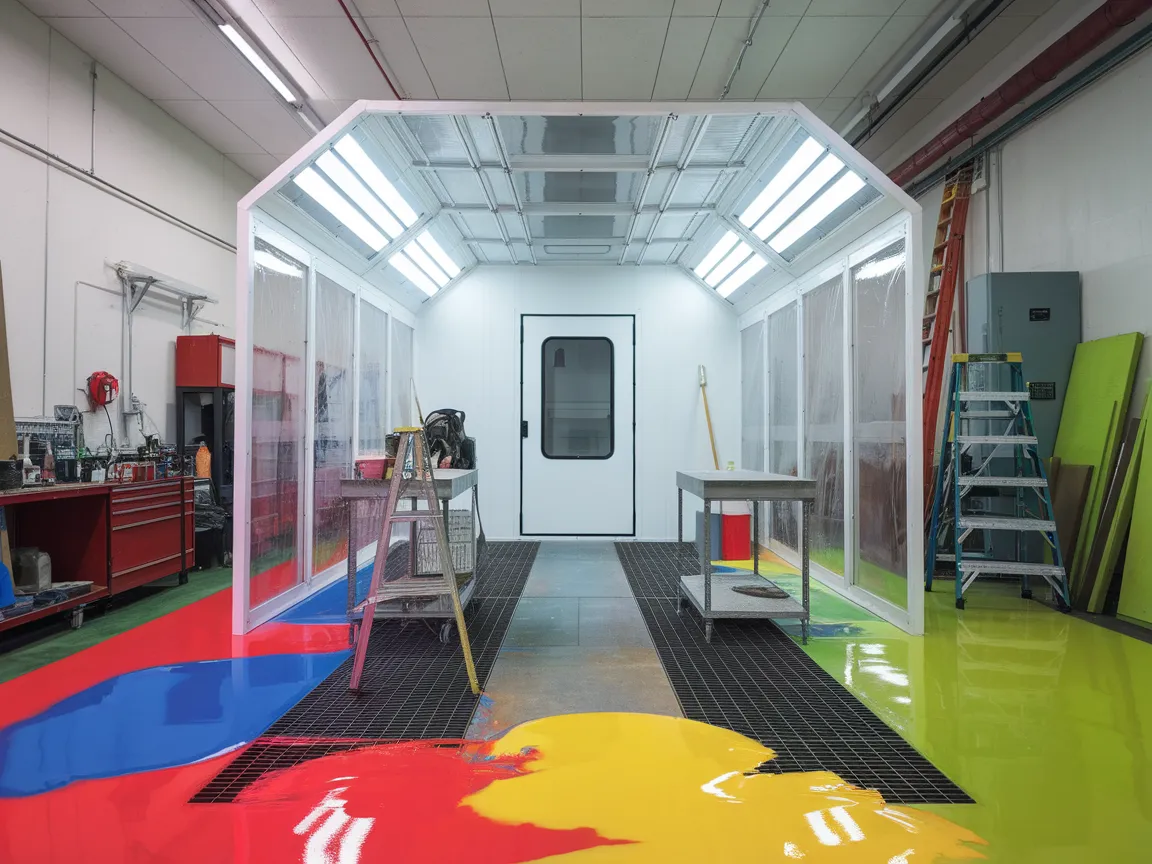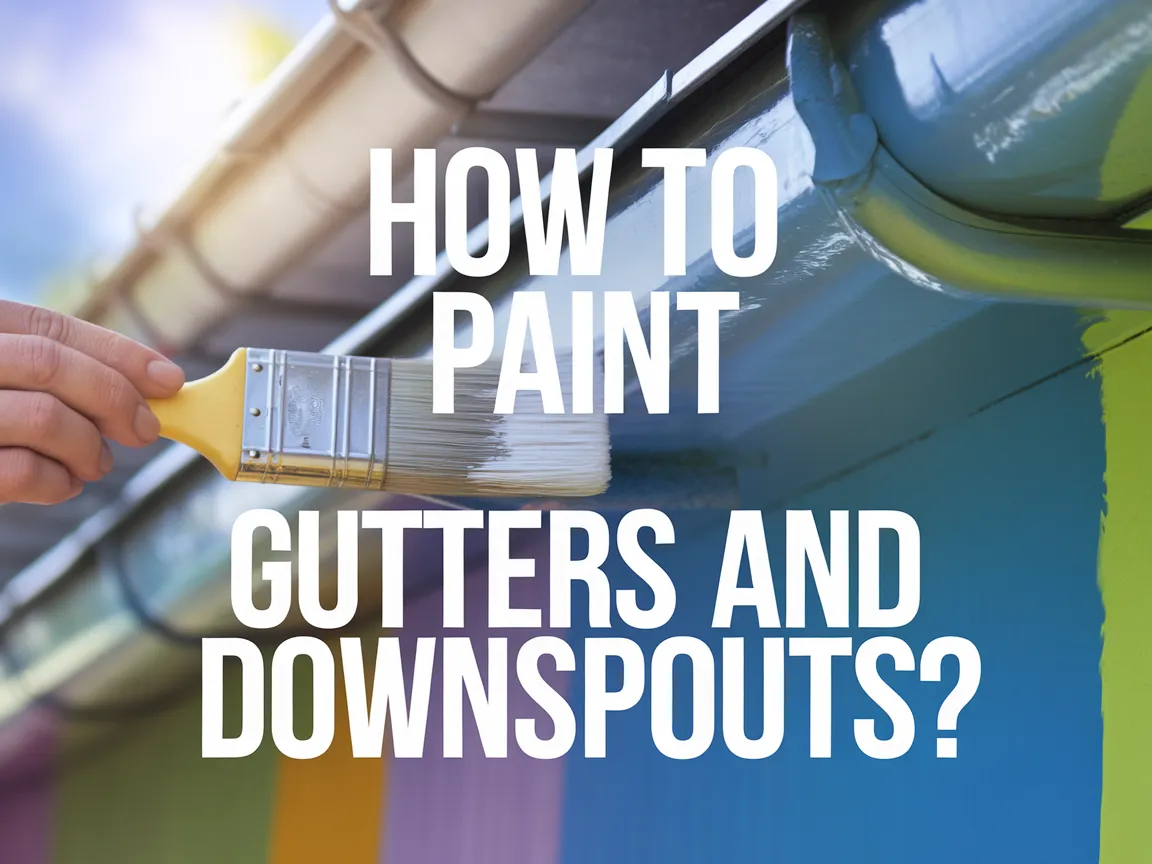Can You Paint Metal Siding?
Published on: April 16, 2025 | Last Updated: January 7, 2025
Written By: Alisha Winters
Metal siding is like a shiny coat for buildings, made from strong materials like aluminum or steel. It protects your home, just like how your coat keeps you warm on a chilly day!
So, can you paint metal siding? It’s crucial to know because painting not only enhances the look but also adds a layer of protection. I’ve seen metal siding transform with color—it’s magical!
In this article, you’ll discover essential preparations before you start painting metal siding, a step-by-step guide for painting metal siding, what paint to use for metal surfaces, and creative DIY project ideas involving metal siding. Let’s get you ready to bring that metal to life!
Contents
- 1 Can You Paint Metal Siding?
- 2 What is Metal Siding?
- 3 Essential Preparations Before You Start Painting Metal Siding
- 4 Step-by-step Guide for Painting Metal Siding
- 5 Types Of Paint Suitable for Metal Siding
- 6 Factors Affecting the Painting Process Of Metal Siding
- 7 Common Issues Encountered When Painting Metal Siding
- 8 Finishing Touches After Painting Metal Siding
- 9 Maintenance Tips After Painting Metal Siding
- 10 Weather Considerations for Painting Metal Siding
- 11 Environmental Impact of Painting Metal Siding
- 12 Cost Considerations for Painting Metal Siding
- 13 Frequently Asked Questions About Painting Metal Siding
- 14 Conclusion
- 15 Useful Resources
Can You Paint Metal Siding?
Yes, you can paint metal siding! Just clean it well and use a primer made for metal. Choose a high-quality exterior paint designed for metal surfaces. This ensures durability and a great look.
What is Metal Siding?
Metal siding is exterior wall cladding made from materials like steel or aluminum. These materials offer durability and protection against severe weather, with metal siding lasting over 50 years. If you’re curious about mixing colors for metal siding finishes, you might want to explore how different paint colors blend.
You might wonder about painting metal siding. A friend of mine painted their metal garage doors, which changed the look of their home.
A friend used metal siding to revamp their home’s exterior. It was important to choose the right method because poor choices can lead to premature wear on a metal building.
Essential Preparations Before You Start Painting Metal Siding
What do you need to prepare for painting metal siding?
- High-Quality Paint: Choose a durable paint like Rust-Oleum Metallic Spray Paint, such as Rust-Oleum 249128. It’s designed for bonding to metal surfaces to prevent chipping.
- Metal Primer: Use a metal primer like Zinsser Bulls Eye 1-2-3 for superior adhesion. Priming helps your paint last up to 10 years!
- Cleaning Supplies: Get TSP Substitute or a specialized metal cleaner like Krud Kutter. Clean surfaces thoroughly to remove grease and grime to prevent peeling.
- Brushes and Rollers: Opt for synthetic brushes or foam rollers. Brands like Wooster or Purdy provide the fine finish needed for smooth application.
- Drop Cloths: Use heavy-duty drop cloths, such as Trimaco’s 100% Cotton Drop Cloths, to protect your landscaping and concrete surfaces from overspray and paint spills.
We’ve wrapped up essential preparations before you start painting metal siding here. Let us turn our attention to the step-by-step painting guide.
Also See: Can You Paint Cultured Marble? Transform Your Space!
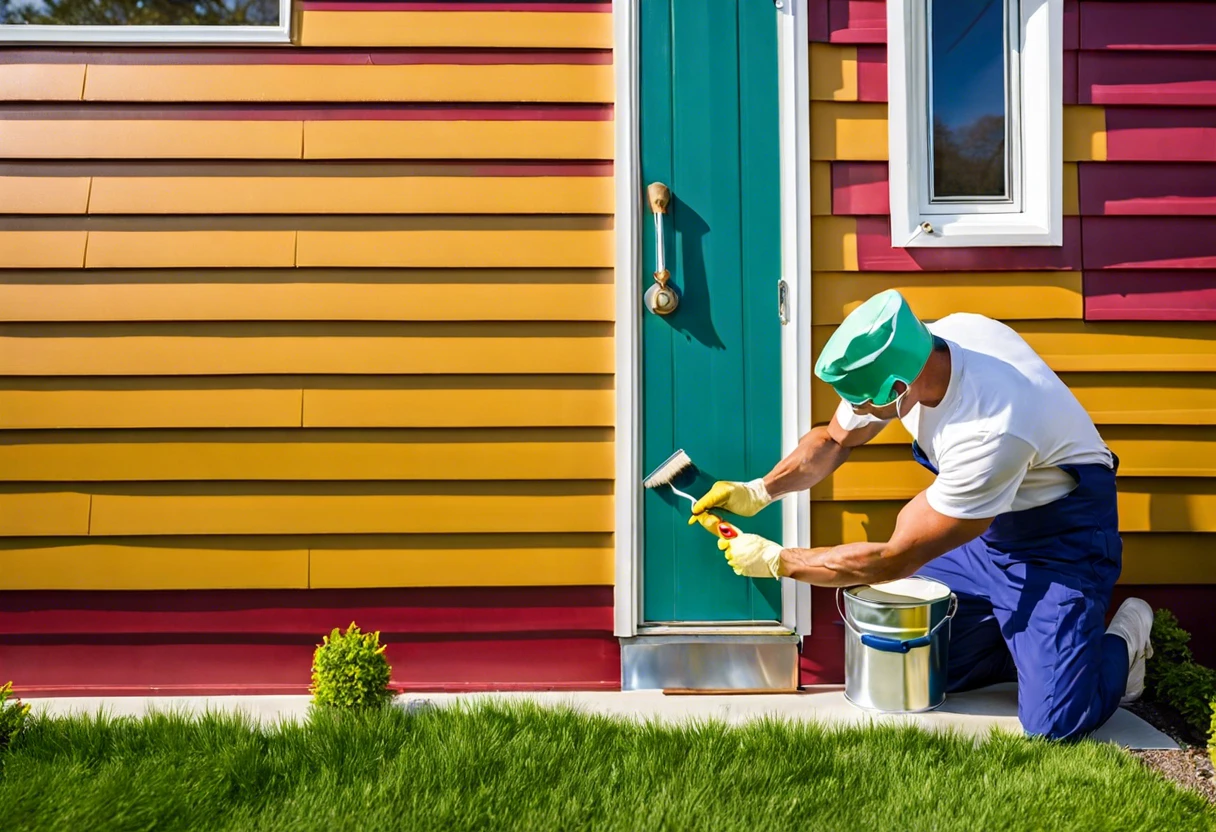
Step-by-step Guide for Painting Metal Siding
This guide covers steps to effectively paint metal siding for optimal results. Follow these steps closely to achieve a fantastic finish!
-
Cleaning the Surface
Start by scrubbing the entire surface with a mixture of soap and water. Use an abrasive pad to clean the grooves, targeting dirt and rust spots for about 15-20 minutes.
A pressure washer can help; use one with at least 2000 psi (14 Mpa) for tough grime. Work from top to bottom to avoid streaking, and let it dry completely before moving on.
-
Repairing Damage
For dinged siding, fill dents or rust spots with metal filler or bodywork putty, using a putty knife for a smooth finish. Sand it down evenly after it’s dry—aim for evenness within 1/32 inch (0.8 Mm) by feeling with your fingers. When disposing of leftover paint materials, you’ll want to know the proper siding repair techniques.
For larger rust areas, use a wire brush or sandblaster. Speed is key; don’t let rust penetrate deeper than 1/8 inch (3 Mm) to avoid structural issues.
-
Applying Primer
Use a high-quality metal primer designed for exterior use. Apply with a sprayer or small roller for even coverage—a 30-40 microns thick coat is ideal for a solid base.
Primer is vital—it helps paint adhere better and can significantly prolong the life of your finish. After priming, wait at least 24 hours before painting.
-
Choosing the Right Paint
Select paint specifically formulated for metal surfaces, ideally rated for corrosion resistance. Epoxy or acrylic paint lasts up to 10 years outdoors without fading.
In hot climates, choose lighter colors that reflect sunlight; they remain cooler. Most paints will recommend multiple coats—follow that for a brighter finish.
-
Painting the Metal Siding
Start by brush-painting corners and detailed areas for better control. Then, use a roller or sprayer for larger sections, covering about 200-300 square feet (18-28 M²) depending on thickness.
Let each coat dry according to the paint’s instructions—usually 1-2 hours between coats. Avoid very hot or cold days, as they can create uneven surfaces.
-
Sealing and Protecting the Painted Surface
Once your final coat is dry, ensure long-lasting protection with a clear sealant. Choose one compatible with your paint type; polyurethane or acrylic sealants extend life against the elements.
Reapply sealant every couple of years for optimal performance. This maintenance routine keeps your metal siding looking fresh and vibrant!
We have now covered a step-by-step process for painting metal siding. Next, we’ll explore suitable paint types for metal siding.
Types Of Paint Suitable for Metal Siding
Let’s explore different types of paint for metal siding: primer, enamel, acrylic, and polyurethane.
-
Primer
Primer is essential for metal siding as it prevents rust and provides a solid base. Choose a rust-inhibiting primer with a dry time of 1-2 hours.
-
Enamel Paint
Enamel paint is durable and resistant to weather, making it ideal for outdoor metal structures. Expect durability of over 5 years with proper application.
-
Acrylic Paint
Acrylic paint offers excellent adhesion and flexibility, perfect for metal siding. It resists cracking and peeling, lasting about 10 years with good maintenance.
-
Polyurethane
Polyurethane provides a tough, glossy finish, offering superior protection against chipping and fading. Many brands claim a lifespan of up to 15 years on metal surfaces.
I prefer using acrylic paint on metal siding. It’s easy to apply and maintains its bright color for a long time, which I truly appreciate.
You should now have a good understanding of suitable paint types for metal siding. In the next part, we’ll discuss factors influencing the painting process.
Factors Affecting the Painting Process Of Metal Siding
What factors should you consider when painting metal surfaces?
-
Surface Preparation: Cleaning and sanding are crucial for paint adhesion.
-
Type of Paint: Using rust-inhibiting and appropriate paint prevents peeling and rust.
-
Weather Conditions: Painting in humid or rainy weather can ruin your finish.
-
Metal Type: Different metal surfaces may require specific paints or techniques for optimal results.
We have now covered the elements influencing the painting of metal siding. The next section addresses typical problems faced during this process.
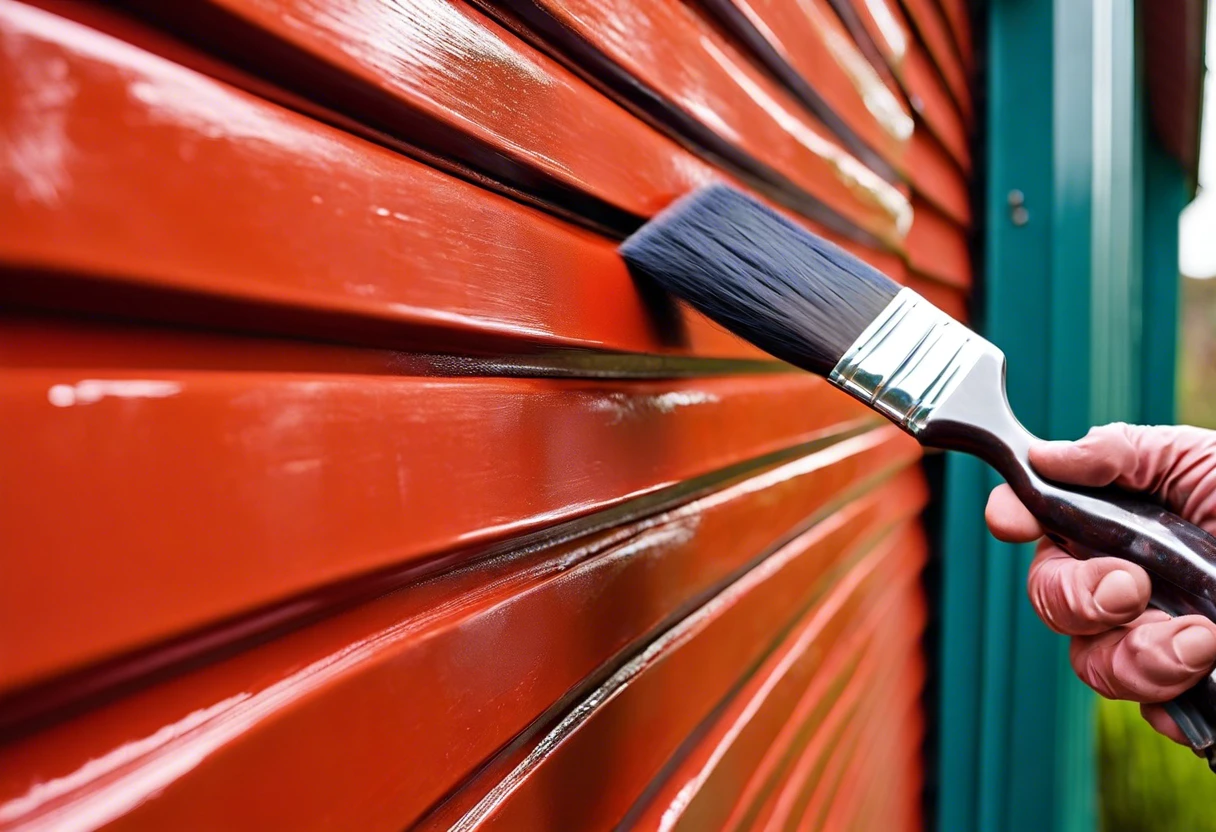
Common Issues Encountered When Painting Metal Siding
When my friend painted her metal siding, she struggled with corrosion. Moisture trapped under the paint caused peeling. Rainy days resulted in a rough finish.
To fix this, she applied a rust-inhibiting primer and waited 24 hours before applying high-quality latex paint. That sealed and protected her metal siding.
Finishing Touches After Painting Metal Siding
After you’ve completed your metal siding project, apply a protective wax or sealant, like Meguiar’s Hybrid Ceramic Wax, for longevity. Reapply every 6 to 12 months to prevent rust.
During your inspection, check specific items. Ensure screws are tight and look for wear or chips in the paint, especially around membrane joints measuring 3 to 5 inches (7.6 To 12.7 Cm) from the edges. If you’re considering applying a protective coating, you might want to explore painting a bed liner for enhanced durability.
I recommend using Rust-Oleum’s High Performance galvanized paint, designed for metal surfaces, to ensure your project endures extreme weather conditions.
For advanced users, maintain pH levels between 3.5 and 8.0 to avoid paint degradation, and consider using an electrostatic sprayer for a smooth, even finish.
Maintenance Tips After Painting Metal Siding
Once your metal siding looks stunning, it’s crucial to keep it in shape. Here are some easy maintenance tips!
- Regular Inspections: Check your metal siding at least twice a year. Look for any chips, rust spots, or wear. Early detection can save you lots of trouble.
- Cleaning: Use a mild detergent solution and a soft cloth to keep the surface clean. This helps prevent dirt build-up, which can lead to corrosion.
- Touch-up Paint: Always have touch-up paint handy. If you spot a chip or scratch, fix it right away to protect against rust.
- Clear Coat Maintenance: If you’ve applied a clear coat, consider reapplying it every 2-3 years to maintain the protective barrier.
Weather Considerations for Painting Metal Siding
Ever wondered how weather affects your painting project? Let’s check it out!
| Weather Condition | Impact on Painting | Best Practices |
|---|---|---|
| High Humidity | Causes paint to dry slowly, leading to dripping. | Avoid painting during humid days; aim for under 60% humidity. |
| Rain | Rain can wash away paint or lead to uneven finishes. | Wait for a dry spell; check the forecast for 24 hours of clear weather. |
| Temperature Below 10°C (50°F) | Can cause paint to not adhere properly. | Only paint when temperatures are between 10°C to 30°C (50°F to 86°F). |
| Direct Sunlight | Can dry paint too quickly, causing uneven application. | Work in shaded areas or during cooler parts of the day. |
Environmental Impact of Painting Metal Siding
Have you ever wondered about the environmental aspects when you decide to paint metal siding? Let’s break it down!
- Paint Choices: Selecting eco-friendly paints reduces harmful emissions. Look for paints labeled with low VOCs (Volatile Organic Compounds), which are less harmful to air quality.
- Recycling Old Paint: Instead of tossing leftover paint, recycle it! Many communities have hazardous waste days—check local listings.
- Durability: Using high-quality paint means it lasts longer, reducing the frequency of repainting. That means less waste in the long run.
Cost Considerations for Painting Metal Siding
Planning to paint? Knowing the costs can help you budget effectively.
| Item | Average Cost (USD) | Details |
|---|---|---|
| Metal Primer | $15 – $30 per gallon | Covers about 300-400 sq. ft. (27-37 m²) per gallon. |
| Exterior Paint | $25 – $70 per gallon | Coverage varies; typically 200-300 sq. ft. (18-28 m²) per gallon. |
| Supplies (brushes, rollers, etc.) | $30 – $100 | Costs depend on quality and quantity. |
| Labor (if hiring a pro) | $25 – $60 per hour | Factors include location, experience, and project size. |
Frequently Asked Questions About Painting Metal Siding
Can I Paint Over Rusted Metal Siding?
Yes, you can paint over rusted metal siding. However, you must first remove the rust using abrasive cleaners or sandpaper to prevent further corrosion.
How Long Does Paint Last on Metal Siding?
Paint lasts an average of 10 to 15 years on metal siding. This longevity largely depends on paint quality and climate conditions.
What is the Best Weather for Painting Metal Siding?
The best weather for painting metal siding is dry and mild conditions. Aim for temperatures between 10°C to 30°C (50°F to 86°F) to ensure optimal adhesion.
Do I Need a Special Primer for Metal Siding?
Yes, you need a special primer for metal siding. A metal-specific primer helps prevent rust and ensures better paint adhesion.
Can I Spray Paint Metal Siding?
Yes, you can spray paint metal siding. This method offers even coverage and efficiency, but ensure you use proper spray paint designed for metal surfaces.
How Do I Prepare Metal Siding for Painting?
You should prepare metal siding for painting by cleaning it thoroughly. Use soapy water to remove dirt, then rinse and allow it to dry completely.
What Type Of Paint Should I Use for Metal Siding?
You should use acrylic or oil-based paint specifically formulated for metal siding. These paints provide durability and rust resistance.
Is It Necessary to Apply a Clear Coat on Metal Siding?
Yes, it’s often necessary to apply a clear coat on metal siding. A clear coat adds a protective layer that enhances durability and sheen.
Conclusion
That brings us to the end of our discussion on the question: can you paint metal siding?
We covered essential preparations, types of suitable paint, creative DIY project ideas, common issues, and a step-by-step guide for painting metal siding. Hopefully, I was able to impart some of my experience on this topic: yes, you can paint metal siding, and with the right paint and preparation steps, you can achieve a durable and vibrant finish.
To further expand your knowledge on this subject, feel free to explore our homepage: Paint Answers.
Useful Resources
- Edwards, B. (2012). Drawing on the Right Side of the Brain. New York, NY: TarcherPerigee.
- How to Paint Metal Siding: Tips, Tricks, and Steps (2024) | Today’s Homeowner
- Can you paint vinyl and aluminum siding? – Quora
- r/HomeImprovement on Reddit: Painting metal siding
Experienced interior designer with 15+ years in transforming spaces, blending artistry with expertise in color and design. Rhode Island School of Design graduate, specializing in restorations and modern makeovers.
Exterior, Siding

